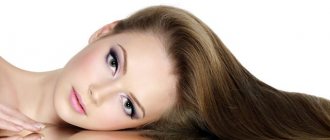Hyperhidrosis - what is it?
Sweat glands are located in the human subcutaneous fat. Most of them are found in the armpits, palms and soles. The glands constantly secrete a certain amount of sweat to prevent the body from overheating. Sweating increases when it is hot outside or after active physical activity, as well as during times of stress and strong emotions. Sweat contains water (99%), which evaporates and cools the body, performing the function of thermoregulation.
In the case of hyperhidrosis, the glands begin to work beyond normal, secreting more fluid than necessary. And these are already pathological violations of the natural process of sweating. In addition to constant discomfort, they are often accompanied by illness.
Hyperhidrosis in children
Young children are no less susceptible to hyperhidrosis than adults. It should be taken into account that before reaching the age of 6 years, the sweating system is just being formed. Afterwards, the sweat glands begin to work stably, and are more similar to the system of an adult. A child’s sweat glands begin to function from 3-4 weeks of life; their work is unstable and may respond inadequately to temperature changes. At the age of three, children sweat a lot during sleep and while eating, which is the norm - the body removes excess heat outside, protecting itself from overheating.
A child's body is well adapted to environmental temperature conditions; a temperature of 18-22 degrees is comfortable for walking in a regular T-shirt. An adult at the same temperature can feel cool and dress a child according to his feelings. When overheated, the body sweats to compensate for excess clothing.
A large number of natural factors can explain a child’s severe sweating, but if signs of hyperhidrosis occur frequently, it is worth consulting with a specialist.
Causes and symptoms of increased sweating
The process of sweating is regulated by the sympathetic autonomic nervous system. When hyperfunction occurs, the system malfunctions and the glands stop working efficiently. As a result, even minor anxiety turns into a disaster.
In addition to aesthetic discomfort, hyperhidrosis entails a number of other problems:
- constant, causeless sweating is often accompanied by an unpleasant odor (osmidrosis);
- sweat has the properties of a weak acid, so upon contact with the skin, irritation, maceration, and dermatitis occur;
- in the absence of adequate treatment, for example, foot hyperhidrosis, over time, microbial and fungal processes affect the skin and nail plates, which, in turn, leads to intoxication of the body and damage to internal organs;
- People with hyperhidrosis have numerous complexes: isolation, lack of self-confidence. This is especially true for young people, since primary hyperhidrosis manifests itself at an early age and is an inhibitory factor for dating and forming relationships, including sexual ones;
- limited opportunities in choosing a profession and even a hobby. For example, with palmar hyperhidrosis, working with paper and other water-sensitive objects becomes almost impossible. Such people are also unlikely to be able to play musical instruments such as guitar, violin, cello. People with hyperhidrosis are also prohibited from participating in some sports;
- With axillary hyperhidrosis, constantly moistened clothing quickly deteriorates, which leads to additional financial costs.
During hyperhidrosis, sweating increases and an unpleasant odor may occur. Increased sweating occurs in local areas or affects the entire body (generalized). Because of this, disturbances in the functioning of the nervous system occur.
Types of hyperhidrosis:
- constant - an abundance of sweat is observed in any season and any weather;
- seasonal - the work of the glands depends on the time of year (intensifies in summer, and declines in winter);
- local - intense sweating in certain areas of the body. As a rule, it is observed on the palms, under the arms and on the soles of the feet;
- compensatory - occurs in response to the occlusion of the sweat glands;
- generalized - the entire surface of the skin sweats excessively;
- primary - occurs in young men during active puberty;
- secondary - appears after the disease has been suffered.
Common causes of generalized hyperhidrosis:
- Reason 1: postmenopausal syndrome. Blood rushes to the head, shortness of breath, changes in blood pressure, diffuse sweating are observed;
- Reason 2: endocrine dysfunction. Increased sweating occurs due to high levels of thyroid hormone or insulin. In this case, an unstable emotional state is characteristic,
- Reason 3: high blood pressure, weight loss, temperature from 37 °C;
- Reason 4: acute infectious diseases such as tuberculosis or influenza also cause the glands to secrete a lot of fluid;
- Reason 5: other reasons (psychogenic conditions, stress, neurology, overdose of various drugs, etc.).
Local sweating most often occurs due to a hereditary predisposition. Due to anatomical features, certain skin areas on the body contain more sweat glands than usual. People with an increased reaction to environmental factors and hypersensitivity to adrenaline hormones also experience profuse sweating.
Conservative methods of treating hyperhidrosis
To prescribe adequate treatment, it is very important to make the correct diagnosis, which can be achieved with a full examination of the patient. The first thing to do is to determine the form of hyperhidrosis: primary (causeless) or secondary (based on some disease). In the second case, you can get rid of increased sweating only by eliminating the disease that provokes it. That is why before treatment it is sometimes necessary to be examined by several specialists of different profiles.
During diagnostics, the following are additionally carried out:
- Minor's test. Allows you to determine the area and, to a certain extent, the intensity of hyperhidrosis;
- study by gravimetric method - a quantitative method for assessing sweat secretion;
- chromatographic study - study of the fatty acid composition of sweat lipids.
After a full comprehensive examination of the patient and diagnosis, treatment can be prescribed.
To eliminate this problem, a set of effective methods is used.
Botox injections
The most effective non-surgical method, which is used in the ANA-COSMO clinic. Carrying out the procedure: the area (armpit, palm, foot) is treated with an antiseptic and an anesthetic gel is applied. Then a drug is injected into the targeted points, which blocks the transmission of nerve impulses to the sweat glands. The procedure takes about 20-30 minutes. The effect occurs within 3-6 days. The duration of action of the drug varies from person to person - on average from 3 to 6 months.
Adverse reactions and complications:
- some people may experience insensitivity to the drug;
- With palmar hyperhidrosis, temporary weakness of the muscles, especially the thumb, may occur.
Contraindications:
Absolute:
- neuromuscular disorders (myasthenia gravis, Lambert Eaton syndrome, etc.);
- pregnancy;
- lactation;
- hemophilia;
- local inflammatory process.
Relative:
- taking anticoagulants;
- somatic diseases in the acute stage;
- taking antibiotics.
There are no side effects if the procedure is performed correctly. For more than 30 years, the history of using botulinum toxin preparations has proven their harmlessness and safety. That is why I have been using botulinum toxin preparations in my work for more than 12 years. And during all this time, the only problem is the short duration of action or no effect at all from the treatment. And it must be said that the more pronounced the degree of the disease, the more often the lack of effect is observed. I would like to note that after 45-50 years, the phenomena of hyperhidrosis gradually fade away on their own. The use of botulinum toxin or surgical treatment contributes to this.
If the effect of using the drug is good, then it can be used indefinitely. I have patients with a 10-year history of positive results from the use of botulinum toxin type A drugs. I often observe a situation where over time the period of the positive effect of the drug decreases. The body produces antibodies to the drug, this leads to inactivation of the drug and a reduction in action.
Drug therapy
The doctor selects the drug and sets the required dose. Belladonna preparations, atropine, and sedatives (motherwort, valerian, and other herbs) are used.
Physiotherapeutic methods
The nervous system is well strengthened by water treatment (therapeutic baths and contrast showers) and electrosleep (stimulating the brain with low frequencies of impulsive current). Drug electrophoresis is also used, which acts locally on the skin area. It combines direct current with ions of medicinal substances.
Psychotherapeutic method
Hypnosis, group therapy, psychotherapy sessions are aimed at eliminating mental problems so that the patient can manage emotions.
Antiperspirants
Used as a local remedy. Their chemical composition narrows or completely blocks the ducts of the sweat glands and prevents excessive sweat secretion.
How to get rid of hyperhidrosis
Modern medicine offers several ways to treat excessive sweating:
- The use of physiotherapeutic methods - BUT! ineffective and time-consuming technique.
- Regular use of special antiperspirants – BUT! Long-term use can cause intoxication of the entire body.
- Taking medications to treat diseases that cause hyperhidrosis.
- Intra- or subdermal injections of Botox, Dysport or Relatox in areas where the problem is localized.
- Invasive techniques: laser treatment, curettage of the inner surface of the skin of the armpits, sympathectomy, liposuction, partial excision of the problem area - BUT! The methods are quite traumatic; after use, scars and cicatrices remain on the body.
Today, the safest and most effective method of correction and treatment of local hyperhidrosis in Russia - as well as throughout the world - is recognized as the injection method of attenuated botulinum toxin type A: Botox (Allergan, USA), Dysport (Ipsen, France), "Relatox" (JSC NPO Microgen, Russia), to the problem area. The method has long and repeatedly proven its effectiveness in practice.
Anyone who has already tried this method of treating hyperhidrosis is so satisfied with the result that he does not even resort to other methods of treatment.
If you are concerned about the problem of increased sweating, contact our clinic in Moscow. We use only certified drugs “Botox”, “Dysport” and “Relatox” for the treatment of hyperhidrosis, which contain weakened botulinum toxin type A. When introduced into problem areas, the drugs effectively block the nerve fibers that transmit impulses to the sweat glands and completely stop their work on the sweat glands. 8-12 months without harm to health.
Treatment of hyperhidrosis with surgery
Surgical treatment of hyperhidrosis includes central and local (local) methods. Local treatments include: ultrasonic liposuction and scraping of the inner surface of problem skin (curettage).
Doctors usually perform sympathectomy endoscopically. Using a medical clip, the upper parts of the sympathetic trunk of the autonomic nervous system are compressed. After this, sweating decreases in the places where the operation was performed. In 10% of patients, a side effect occurs - compensatory hyperhidrosis, when the glands of other skin areas begin to produce more sweat to compensate for the overlap.
Care instructions
Sweat is a favorable environment where bacteria reign. Therefore, if you have hyperhidrosis, you must strictly observe hygiene.
It is necessary to make herbal baths for your feet and palms every day, wash in the shower several times, wipe with a wet towel, and use a special hand cream. Cosmetic deodorants will help combat the odor.
It is better to wear natural and breathable clothing and comfortable shoes with insoles. In this case, you need to change your underwear, tights and socks often.
Alcoholic drinks, coffee, smoked meats, spicy and very hot foods, onions, garlic and spices should be excluded from the daily diet.
Find out detailed information about the treatment of hyperhidrosis at the ANACOSMA clinic on the page https://anacosmo.ua/plasticheskaya-hirurgiya/lechenie-gipergidroza/.
Prevention and treatment
Diagnosis of excessive sweating begins with a visit to the pediatrician and dermatologist. The doctor writes out a referral for blood tests (general, sugar levels, hormones) and urine. If necessary, ultrasound, x-ray, ECG and additional consultation with specialists - endocrinologist, cardiologist, infectious disease specialist - are prescribed. To treat excessive sweating, sedatives, vitamin-mineral complexes, immunomodulators, and, if necessary, exercise therapy and electrophoresis are prescribed.
Compliance with preventive measures will help avoid or speed up the treatment process, these include:
- mandatory scheduled visits to the pediatrician;
- daily air baths;
- morning and evening water procedures;
- taking baths with chamomile, oak bark, string;
- wear loose-fitting clothes made of soft, natural materials;
- use of hypoallergenic laundry detergents;
- excluding fatty, spicy and salty foods from the diet, limiting sweets;
- maintaining temperature and humidity in rooms;
- maintaining a calm environment in the family, excluding nervous shocks.











